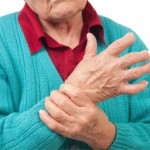Systemic Improvements Needed

Dr. Björk
Mathilda Björk, PhD, professor of occupational therapy at Linköping University, Sweden, said interviews conducted with patients, employers and other stakeholders show the need for systemic improvements in helping people with chronic pain return to work.
Researchers interviewed 18 patients and 28 others—employers and those with occupational health services, for example—for insights into their experience. The study was done as part of a project called SaMMRA, an effort to understand and correct barriers for people with chronic pain in returning to work.
Research shows that a collaboration among everyone involved in the rehabilitation process is vital in getting people back to work, but “how this intervention should be arranged in this black box of rehabilitation to facilitate the sustainable return to work, we’re not sure about yet,” Dr. Björk said.1
In the interviews, it became clear that different services and organizations all have their own regulations to follow and that bridging the differences in those regulations was a major challenge. Flexibility, she said, is key, but inflexibility was all too common.
The majority of participants said more knowledge about such things as the health insurance system and about chronic pain itself would help people navigate their way back to employment.
The issue of timing also loomed large, she said. Participants in rehabilitation have to stay motivated and be ready for the different stages, but, Dr. Björk said, “it’s very individual what the right timing is for different patients.”
Overall, there seemed to be no unifying path toward and no one clearly in charge of how to achieve the end goal.
“There is no clear responsibility for keeping together the return-to-work process,” she said. “Different goals, lack of knowledge, responsibilities and coordination make it difficult to create a person-centered rehabilitation process.”
The “crucial point” in the process, Dr. Björk said, appeared to be the point immediately after rehabilitation is complete—when the patient has the skills and knowledge to return to work, but the employer or the system is not flexible enough to adapt to the person’s needs.
When the system did work, flexibility and creativity were ingredients that stood out, Dr. Björk said.
“My overall impression from the studies we conducted, and the clinical experience I have, is that it’s often based on each actor’s good will to create the flexible solution based on the patient’s need,” Dr. Björk said. “To achieve a more effective collaboration, I think we need better consensus, to work more with person-centered efforts and to have clearer structures for how collaboration should be carried out.”

